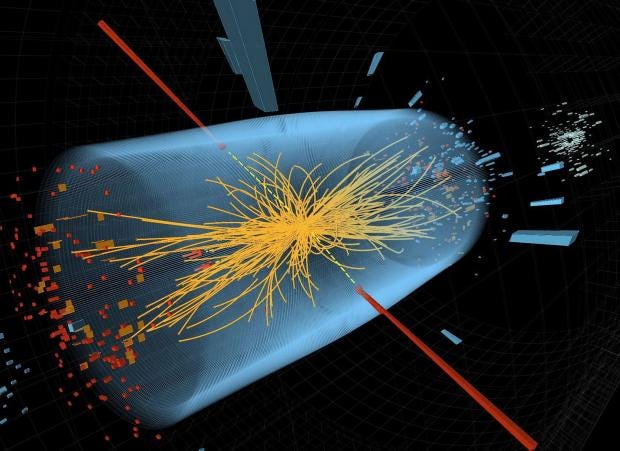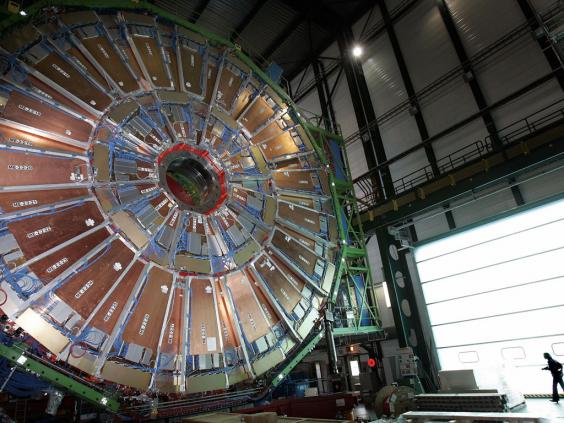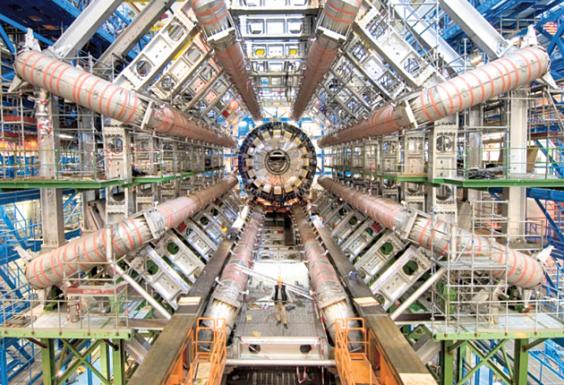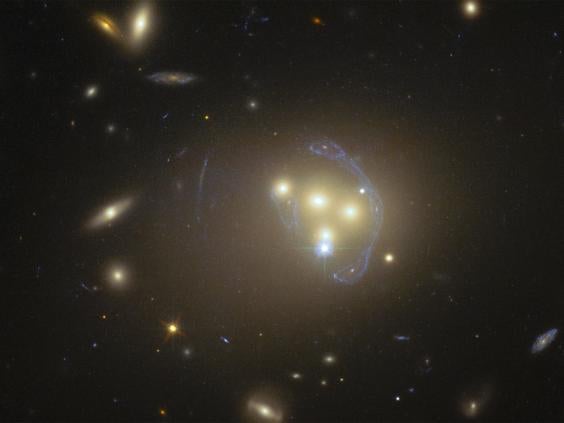CERN has stated that the LHCb experiment had discovered the presence of two new baryon subatomic particles. A deeply worrying and controversial line of thinking has emerged within the physics community. It's the idea that we are reaching the utter limit of what we can understand about the world around us through science.

“The next few years may tell us whether we'll be capable of continuing to increase our understanding of nature or whether maybe, for the first time in the history of science, we could be facing questions that we cannot answer,” Harry Cliff, a particle physicist at the European Organization for Nuclear Research — better known as CERN — said in a latest TED talk in Geneva, Switzerland.
Equally scary is the reason for this imminent limit, which Cliff says is because “the laws of physics forbid it.”
At the core of Cliff's argument are what he calls the two most dangerous numbers in the cosmos. These numbers are accountable for all the matter, structure, and life that we witness across the cosmos. And if these two numbers were even somewhat different, says Cliff, the cosmos would be an empty, lifeless place.
Dangerous No. 1: The strength of the Higgs field

The first dangerous number on Cliff's list is a value that signifies the strength of what physicists call the Higgs field, an unseen energy field not completely unlike other magnetic fields that permeates the cosmos. As particles swim through the Higgs field, they gain mass to ultimately become the protons, neutrons, and electrons comprising all of the atoms that make up you, me, and everything we see around us.
Without it, we wouldn't be here.
We know with near certainty that the Higgs field exists because of a revolutionary finding in 2012, when CERN physicists discovered a new elementary particle called the Higgs boson. According to theory, you can't have a Higgs boson without a Higgs field. But there's something enigmatic about the Higgs field that continues to perturb physicists like Cliff.
According to Einstein's theory of general relativity and the theory of quantum mechanics — the two theories in physics that drive our understanding of the cosmos on incredibly large and extremely small scales — the Higgs field should be performing one of two tasks, says Cliff.
Either it should be turned off, meaning it would have a strength value of zero and wouldn't be working to give particles mass, or it should be turned on, and, as the theory goes, this "on value" is "absolutely enormous," Cliff says. But neither of those two scenarios are what physicists observe.
“In reality, the Higgs field is just slightly on,” says Cliff. “It's not zero, but it's ten-thousand-trillion times weaker than it's fully on value — a bit like a light switch that got stuck just before the 'off' position. And this value is crucial. If it were a tiny bit different, then there would be no physical structure in the universe.”
Why the strength of the Higgs field is so absurdly weak defies understanding. Physicists hope to find an answer to this question by discovering brand-new particles at the recently upgraded particle accelerator at CERN. So far, though, they're still hunting.

Dangerous No. 2: The strength of dark energy
The distribution of dark matter is shown in blue and the gas distribution in orange. This simulation is for the present state of the cosmos and is centered on a massive galaxy cluster. The area shown is approximately 300 million light-years across. Cliff's second dangerous number doubles as what physicists have called “the worst theoretical prediction in the history of physics.”
This dangerous number deals in the depths of deep space and a mind-meltingly complex phenomenon called dark energy. Dark energy, a repulsive force that's accountable for the accelerating expansion of our universe, was first measured in 1998.

Still, “we don't know what dark energy is,” Cliff admits. “But the best idea is that it's the energy of empty space itself — the energy of the vacuum.”
If this is true, you should be capable of summing up all the energy of empty space to get a value demonstrating the strength of dark energy. And though theoretical physicists have done so, there's one gigantic problem with their answer:
“Dark energy should be 10120 times stronger than the value we detect from astronomy,” Cliff said. “This is a number so mind-bogglingly enormous that it's impossible to get your head around ... this number is greater than any number in astronomy — it's a thousand-trillion-trillion-trillion times bigger than the number of atoms in the cosmos. That's a pretty bad prediction.”
On the bright side, we're lucky that dark energy is smaller than theorists forecast. If it followed our theoretical models, then the repulsive force of dark energy would be so enormous that it would literally rip our universe apart. The fundamental forces that bind atoms together would be powerless against it and nothing could ever form — galaxies, stars, planets, and life as we know it would not exist.
On the other hand, it's tremendously frustrating that we can't use our present theories of the cosmos to develop a better measurement of dark energy that agrees with existing observations. Even better than improving our theories would be to find a way that we can understand why the strength of dark energy and the Higgs field is what it is.
Getting answers could be impossible
Cliff said there is one likely way to get some answers, but we might never have the ability to prove it. If we could somehow confirm that our cosmos is just one in a vast multiverse of billions of other cosmoses, then “suddenly we can understand the weirdly fine-tuned values of these two dangerous numbers [because] in most of the multiverse dark energy is so strong that the cosmos gets torn apart, or the Higgs field is so weak that no atoms can form,” Cliff said.

To prove this, physicists need to find new particles that would uphold drastic theories like string theory, which predicts the presence of a multiverse. Right now, there's only one place in the world that could perhaps produce these particles, if they exist, and that's the Large Hadron Collider at CERN.
And physicists only have two to three years before CERN shuts the LHC down for upgrades. If we haven't found anything by then, Cliff said, it could signal the beginning of the end.
“We may be entering a new era in physics. An era where there are weird features in the universe that we cannot explain. An era where we have hints that we live in a multiverse that lies frustratingly beyond our reach. An era where we will never be able to answer the question why is there something rather than nothing.”


No comments:
Post a Comment